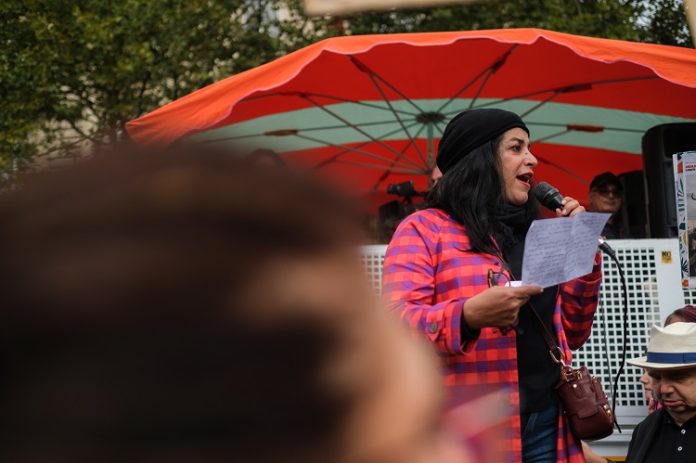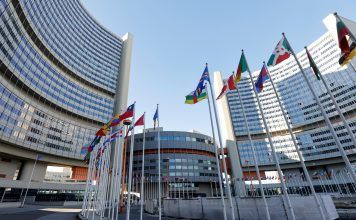
By Nazanine Nouri
Marjane Satrapi, the award-winning French-Iranian graphic novelist and filmmaker, has been elected to France’s prestigious Académie des Beaux-arts – or Fine Arts Academy.
Satrapi is the second Iranian-born personality to be elected to the Academy. Empress Farah Pahlavi has been a foreign associate member of the academy since 1974. Other foreign members include Sheikha Moza bint Nasser of Qatar (who joined in 2007), Prince Karim Aga Khan IV (2007), Woody Allen (2004), the architect Norman Foster (2007), the photographer Annie Leibovitz (2022), and 10 other cultural personalities.
French Senate Hosts Empress Farah Pahlavi and Princess Nour Pahlavi
The Académie des Beaux-arts is a French scholarly society that was created in 1816 in Paris and which brings together 63 members from nine artistic disciplines: painting, sculpture, architecture, engraving, musical composition, cinema and audiovisual, photography, and choreography.
A month after her February election to the Academy, Satrapi unveiled the monumental tapestry she designed to mark the 2024 Summer Olympics in Paris.
“I’m finally considered French,” she told the daily Le Monde after unveiling the triptych’s first panel on March 12.
“When I got the call, I thought it was a hoax, but it wasn’t,” she told Reuters of being commissioned to produce the tapestry. “I was very delighted, very honored, very happy but also very stressed.”

The tapestry — a triptych woven in wool by the historic Manufacture des Gobelins tapestries workshops over a period of three years — is based on a sketch created by Satrapi at the request of the Organizing Committee for the Olympic and Paralympic Games.
Measuring 9.5 meters by 3.4 meters, the triptych will be displayed on the façade of the Hôtel de la Marine on the Place de la Concorde in Paris and will later be moved to Nice, home of the 2030 Winter Games. The central panel of the triptych features two stylized silhouettes, one female and one male, facing each other in an athletic movement, a flame rising above their hands, with the base of the Eiffel Tower and the Paris skyline as backdrop.
Hervé Lemoine, the director of the Mobilier National, told Le Monde that they were looking for an artist with a highly visual style of expression “who also conveys in her thinking, her discourse, the values of universalism on the one hand, and the values of France on the other.”
When she was commissioned for the work in 2021, she spoke of her special relationship with France. “France is my adoptive stepmother,” she told Paris Match magazine. “She has been kind to me, kinder than my own mother. Many of the things that I was able to do in my life, I owe to France and to its generosity.”
Satrapi was born in 1969 in the Iranian city of Rasht. The only child of secular, Westernized intellectuals, she grew up in Tehran and attended the Lycée Français until the age of 14, when her parents decided to send her to Austria to study, fearing that she might get in trouble with the authorities.
Once in Vienna, she had a failed relationship which sent her into a downward spiral that led to homelessness and drug abuse. She returned to Tehran at 19, studied art, and after a short-lived marriage, moved to France in 1993. After completing a degree in Illustration from the Strasbourg School of Decorative Arts, she moved to Paris where she has lived ever since with her Swedish husband, Mattias Ripa.
Satrapi is best known for her autobiographical graphic novel “Persepolis,” a graphic novel that chronicles her adolescence and young adulthood in post-revolution Iran and in Austria before she settles in France. Published in French in 2000, “Persepolis” is today considered one of the most successful graphic novels of all time. Translated into English and at least 20 other languages, it has sold millions of copies worldwide.
Persepolis was subsequently adapted by Satrapi for the big screen, and the animation film was nominated for an Academy Award for best animated feature in 2007.
Satrapi continued to explore the boundaries between the graphic novel and the memoir with “Embroideries” (2003), an account of her candid conversations in Tehran with her mother, grandmother and other female relatives and friends about love, sex and men; “Chicken with Plums,” (adapted into a movie in 2011), the story of her great-uncle, a renowned “tar” (lute) player who resolves to die when he cannot properly replace his broken instrument; and the illustrated children’s books “Monsters Are Afraid of the Moon” (2001) and “The Sigh” (2004). She also directed “The Voices” (2014) and “Radioactive” (2019), a biopic about Marie Curie.
In 2021, her striking portraits of women with red lips and manes of jet-black hair were showcased at the Art Paris art fair.
In 2023, Satrapi, together with four Iranian and 13 non-Iranian illustrators, released a book titled “Woman, Life, Freedom.” Originally published in French, the book has been translated into English and other languages, and the Persian version of the book is freely accessible online.
Satrapi came up with the concept for the book together with Abbas Milani – Stanford University’s director of Iranian Studies — and Farid Vahid — a Paris-based academic specialized in Iranian studies. Satrapi then collaborated with other writers and illustrators (including Mana and Touka Neyestani) on the publication, writing texts, drawing designs and producing the cover.
Marjane Satrapi Releases ‘Woman, Life, Freedom’ Book With Fellow Illustrators













